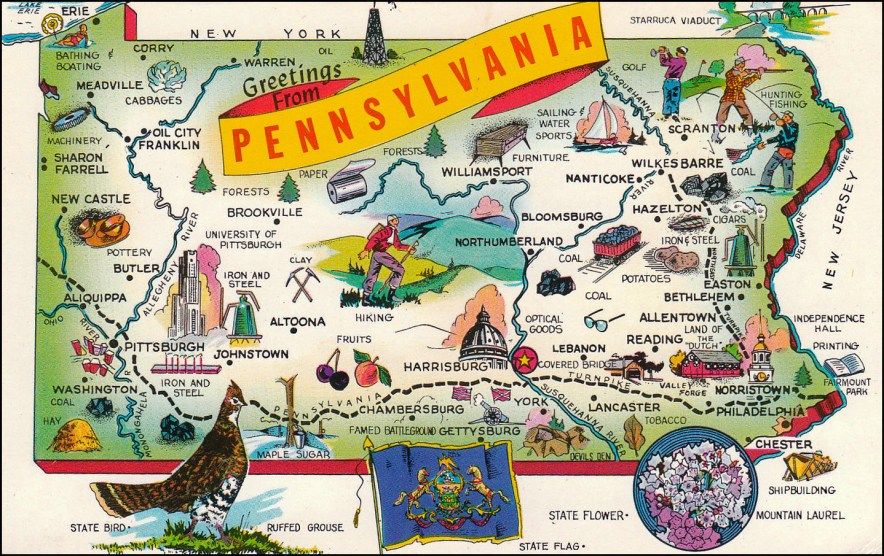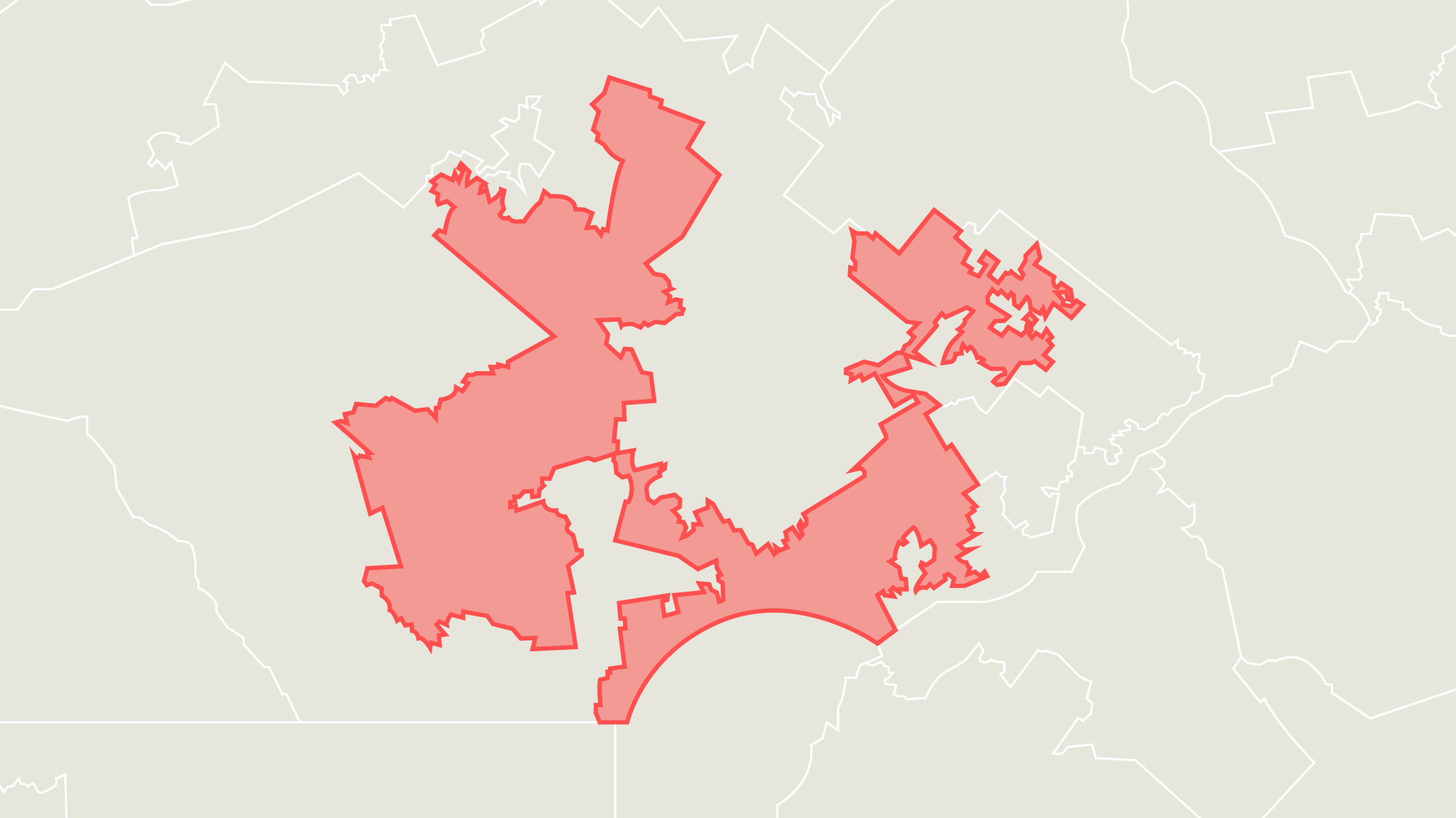
Yesterday the Pennsylvania Supreme Court declared the state’s congressional districts unconstitutional because they had been so badly gerrymandered. The result of the 2016 election bears out how effective the gerrymander was: Republicans won 54 percent of the congressional vote but received 72 percent of the congressional seats (13 out of 18).
Conventional wisdom says that federal courts are unlikely to accept an appeal since the ruling was based solely on state law. Because it was a per curiam decision there was no lengthy opinion to explain the court’s reasoning, but they made clear that it was based on violations of the Pennsylvania state constitution.

Pennsylvania’s 7th congressional district, drawn to help Republicans maintain a political edge.
Mother Jones; National Atlas
However, even though the Pennsylvania case doesn’t officially have any bearing on federal cases of gerrymandering, it does provide yet another boost to the already skeptical judicial atmosphere surrounding them. The Supreme Court has never ruled against a redistricting plan, treating it as a purely political question, but that could change this year when the court rules on a pair of gerrymandering cases from Wisconsin and Maryland. They’ll turn on the power of technology in a couple of fundamental ways:
- In the past, courts correctly assumed that gerrymandering could be taken only just so far. Human minds can only do so much, after all. But computerized mapping has become so advanced that it’s now possible for even the most dimwitted party leader to create a wildly gerrymandered map at the touch of a button. There’s no longer anything that prevents any state with one-party control from adopting the most partisan gerrymander that’s mathematically possible.
This changes things considerably. The basic question here is: at what point does a quantitative change become so large that it becomes a qualitative change? Similar questions are at the root of many recent privacy cases. In the past, for example, there was a natural limit to how extensively law enforcement agencies could track people since surveillance required human manpower that was in limited supply. But modern technology has changed that: cell phones and cheap video cameras and keyword analysis of wiretapping make it possible to track dozens or hundreds of people with virtually no effort. Is that something the founders expected?
- If technology has created this problem, it’s likely that technology is also the solution. In the cases that have appeared before the court recently, plaintiffs have argued that it’s now possible to rely on clear and impartial computerized algorithms that put hard restraints on the allowable amount of gerrymandering. Chief Justice John Roberts famously called this “sociological gobbledygook” in the oral arguments for one of the current cases, but it’s not clear if a majority of the court still agrees with him about this.
My sense of the Supreme Court is that they’ve been too reluctant to acknowledge the changes that technology have made in the political landscape. It makes maximal gerrymandering a routine occurrence. It allows police departments to keep an unlimited number of people under constant surveillance. It allows states to suppress minority votes using sophisticated data mining techniques that quickly find alternate justifications for their actions.
Needless to say, this is only going to get worse as technology improves. When technology makes something 20 percent or 30 percent more effective, it’s easy for the court to decide that nothing fundamental has changed and its old rules should still apply. But when technology makes something 100 percent or 500 percent more effective, it gets a lot harder. Something fundamental has changed, and that means technology almost certainly has to be the answer.
Of course, that also means Supreme Court justices are sometimes asked to make rulings based on arguments that rely on intricate algorithmic disputes. This is decidedly not something they’re comfortable with, but if they want to stay relevant in the 21st century they’re probably going to have start doing it anyway. Not every question can be solved by recourse to the text of a document written in 1787.















